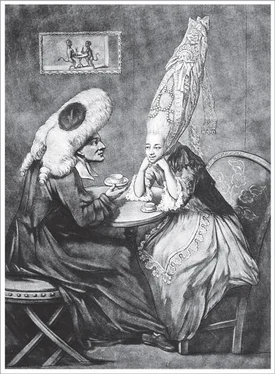Bill Bryson - At Home
Здесь есть возможность читать онлайн «Bill Bryson - At Home» весь текст электронной книги совершенно бесплатно (целиком полную версию без сокращений). В некоторых случаях можно слушать аудио, скачать через торрент в формате fb2 и присутствует краткое содержание. Жанр: Старинная литература, на английском языке. Описание произведения, (предисловие) а так же отзывы посетителей доступны на портале библиотеки ЛибКат.
- Название:At Home
- Автор:
- Жанр:
- Год:неизвестен
- ISBN:нет данных
- Рейтинг книги:4 / 5. Голосов: 1
-
Избранное:Добавить в избранное
- Отзывы:
-
Ваша оценка:
- 80
- 1
- 2
- 3
- 4
- 5
At Home: краткое содержание, описание и аннотация
Предлагаем к чтению аннотацию, описание, краткое содержание или предисловие (зависит от того, что написал сам автор книги «At Home»). Если вы не нашли необходимую информацию о книге — напишите в комментариях, мы постараемся отыскать её.
At Home — читать онлайн бесплатно полную книгу (весь текст) целиком
Ниже представлен текст книги, разбитый по страницам. Система сохранения места последней прочитанной страницы, позволяет с удобством читать онлайн бесплатно книгу «At Home», без необходимости каждый раз заново искать на чём Вы остановились. Поставьте закладку, и сможете в любой момент перейти на страницу, на которой закончили чтение.
Интервал:
Закладка:
Houses were increasingly designed to keep staff out of sight and separate from the household except to the point of absolute necessity. The architectural refinement that most added to segregation was the back staircase. “The gentry walking up the stairs no longer met their last night’s faeces coming down them” is how Mark Girouard neatly put it. “On both sides this privacy is highly valued,” wrote Robert Kerr in The Gentleman’s House , though we may safely assume that Mr. Kerr had a closer acquaintanceship with the feelings of those who filled the chamber pots than those who emptied them.
At the highest level guests and permanent members of the household were sometimes required to be as invisible as servants. When Queen Victoria went on her afternoon walks through the grounds of Osborne House on the Isle of Wight, no one at all, from any level of society, was permitted to encounter her. It was said that you could fix her location by the sight of panicked people fleeing before her. On one occasion the Chancellor of the Exchequer, Sir William Harcourt, found himself caught on open ground with nothing to hide behind but a dwarf shrub. As Harcourt was six feet four inches tall and very stout, his hiding could be no more than a token gesture. Her majesty affected not to see him, but then she was very accomplished at not seeing things. In the house, where encounters in the corridors were unavoidable, it was her practice to gaze fixedly ahead and, with an imperious glint, dematerialize anyone who unexpectedly appeared. Servants, unless extremely well trusted, were not allowed to look directly at her.
“The division of classes is the one thing which is most dangerous and reprehensible and never intended by the law of nature and which the Queen is always labouring to alter,” Victoria once wrote, conveniently ignoring that the one place this noble principle didn’t apply was in her own regal presence.
The senior servant within the household was the butler. His female counterpart was the housekeeper. Below them came the clerk of the kitchen and the chef, followed by an array of housemaids, parlormaids, valets, houseboys, and footmen. Footmen were originally just that—men who trotted on foot beside their master or mistress’s sedan chair or carriage, to look glorious and perform any necessary services en route. By the seventeenth century, they were prized like racehorses, and sometimes their masters raced them against one another for high stakes. Footmen did most of the public jobs in the household—answered the door, served at table, delivered messages—and so were often chosen for their height, bearing, and general dishiness, much to the disgust of Mrs. Beeton. “When the lady of fashion chooses her footman without any other consideration than his height, shape and tournure of his calf, it is not surprising that she should find a domestic who has no attachment for the family,” she sniffed.
Liaisons between footmen and mistresses were popularly supposed to be a feature of some of the more relaxed of the nation’s households. In one well-known case Viscount Ligonier of Clonmell discovered that his wife had been consorting with an Italian nobleman, Count Vittorio Amadeo Alfieri. Ligonier offered a challenge, as honor required, and the two men had a duel of sorts in London’s Green Park, using swords borrowed from a nearby shop. They tapped weapons for a few minutes, but their hearts didn’t really appear to be in it, possibly because they knew the capricious Lady Ligonier wasn’t worth spilling blood over, a suspicion she confirmed almost immediately by running off with her footman. This prompted a good deal of appreciative ribaldry throughout the nation and some happy versifying, of which I can offer this couplet:
But see the luscious Ligonier
Prefers her post boy to her Peer
Life for servants wasn’t all bad by any means. The big country houses generally were lived in for only two or three months a year, so for some servants life was long periods of comparative ease punctuated by seasons of hard work and very long hours. For town servants, the opposite was generally the case.
Whether in the country or in town, servants were warm, well fed, decently attired, and adequately sheltered at a time when those things meant a good deal. It has been calculated that, when all the comforts are factored in, a senior servant enjoyed a salary equivalent to £50,000 in today’s money. Additional perks were generally also available for those ingenious or daring enough to seize them. At Chatsworth, for instance, beer was piped from the brewhouse to the house in a pipe that ran through Joseph Paxton’s great conservatory. At some point during routine maintenance it was discovered that an enterprising member of the household had, equally routinely, been tapping into it.
Servants often made pretty good money from tips, too. It was usual when departing from a dinner party to have to pass a line of five or six footmen, each expecting his shilling, making a dinner out a very expensive business for everyone but the servants. Weekend guests were expected to be lavish in their tips, too. Servants also made money from showing visitors around. A custom arose in the eighteenth century of providing tours to callers if they were respectably dressed, and it became common for middle-class people to visit stately homes in much the same way they do today. In 1776, a visitor to Wilton House noted that she was visitor number 3,025 that year, and it was still only August. Some properties received so many sightseers that arrangements had to be formalized to keep things under control. Chatsworth was open on two designated days a week, and Woburn, Blenheim, Castle Howard, Hardwick Hall, and Hampton Court similarly introduced opening hours to try to limit the throngs. Horace Walpole was so plagued with visitors to his house, Strawberry Hill at Twickenham, that he issued tickets and printed a long, rather peevish list of rules about what would be permitted and what not. If, for example, an applicant applied for four tickets, but five people then turned up, none would be admitted. Other houses were more accommodating. Rokeby Hall, in Yorkshire, opened a tea room.
Often the hardest work was in smaller households, where one servant might have to do the work of two or three elsewhere. Mrs. Beeton, predictably, had a great deal to say about how many servants one should have depending on financial position and breeding. Someone of noble birth, she decreed, would require at least twenty-five servants. A person earning £1,000 a year needed five—a cook, two housemaids, a nursemaid, and a footman. The minimum for a professional middle-class household was three: parlormaid, housemaid, and cook. Even someone living on as little as £150 a year was deemed wealthy enough to employ a maid-of-all-work (a job title that truly said it all). Mrs. Beeton herself had four servants. In practice, however, it appears that most people didn’t employ nearly as many people as Mrs. Beeton thought they should.
A much more typical household was that of Thomas and Jane Carlyle, the historian and his wife, who employed a single maid at 5 Great Cheyne Row in Chelsea. Not only did this underappreciated soul have to cook, clean, clear away dishes, tend fires, haul ash, deal with callers, manage supplies, and do all the rest, but each time the Carlyles wanted a bath—and they wanted many—she had to draw, heat, and carry eight or ten gallons of hot water up three flights of stairs, and afterward repeat the process in reverse.
In the Carlyles’ house, the maid didn’t have a room of her own, but lived and slept in the kitchen—a surprisingly common arrangement in smaller households, even refined ones such as the Carlyles’. The kitchen at Great Cheyne Row was in the basement, and was warm and snug, if a touch dark, but even this elemental space was not the maid’s to control. Thomas Carlyle liked its coziness, too, and often chose to read there in the evenings, banishing the maid to the “back kitchen,” which doesn’t sound too dire, but in fact was just an unheated storeroom. There the maid perched among sacks of potatoes and other provisions until she heard the scrape of Carlyle’s chair, the tap of his pipe on the grate, and the sounds of his retiring, which was often very late, and could at last claim her spartan bed.
Читать дальшеИнтервал:
Закладка:
Похожие книги на «At Home»
Представляем Вашему вниманию похожие книги на «At Home» списком для выбора. Мы отобрали схожую по названию и смыслу литературу в надежде предоставить читателям больше вариантов отыскать новые, интересные, ещё непрочитанные произведения.
Обсуждение, отзывы о книге «At Home» и просто собственные мнения читателей. Оставьте ваши комментарии, напишите, что Вы думаете о произведении, его смысле или главных героях. Укажите что конкретно понравилось, а что нет, и почему Вы так считаете.












